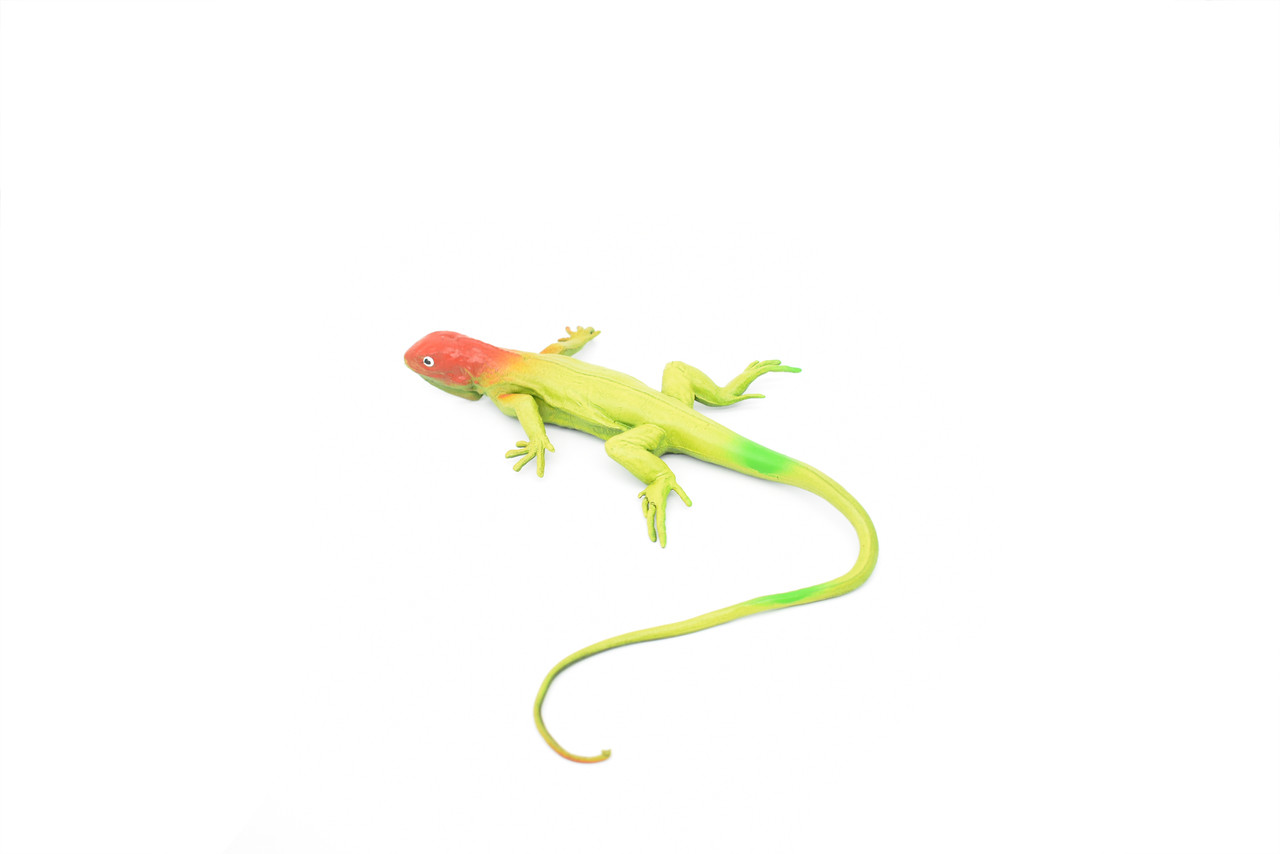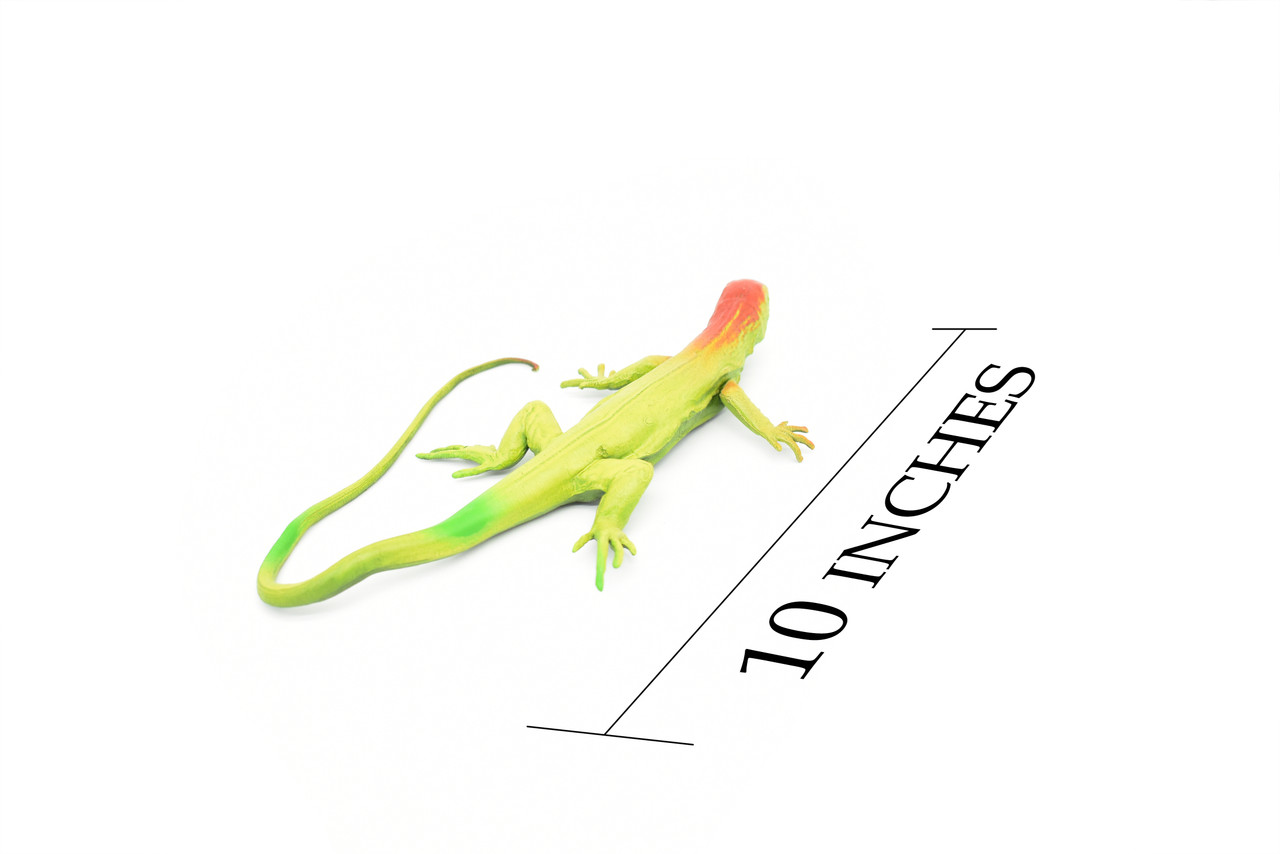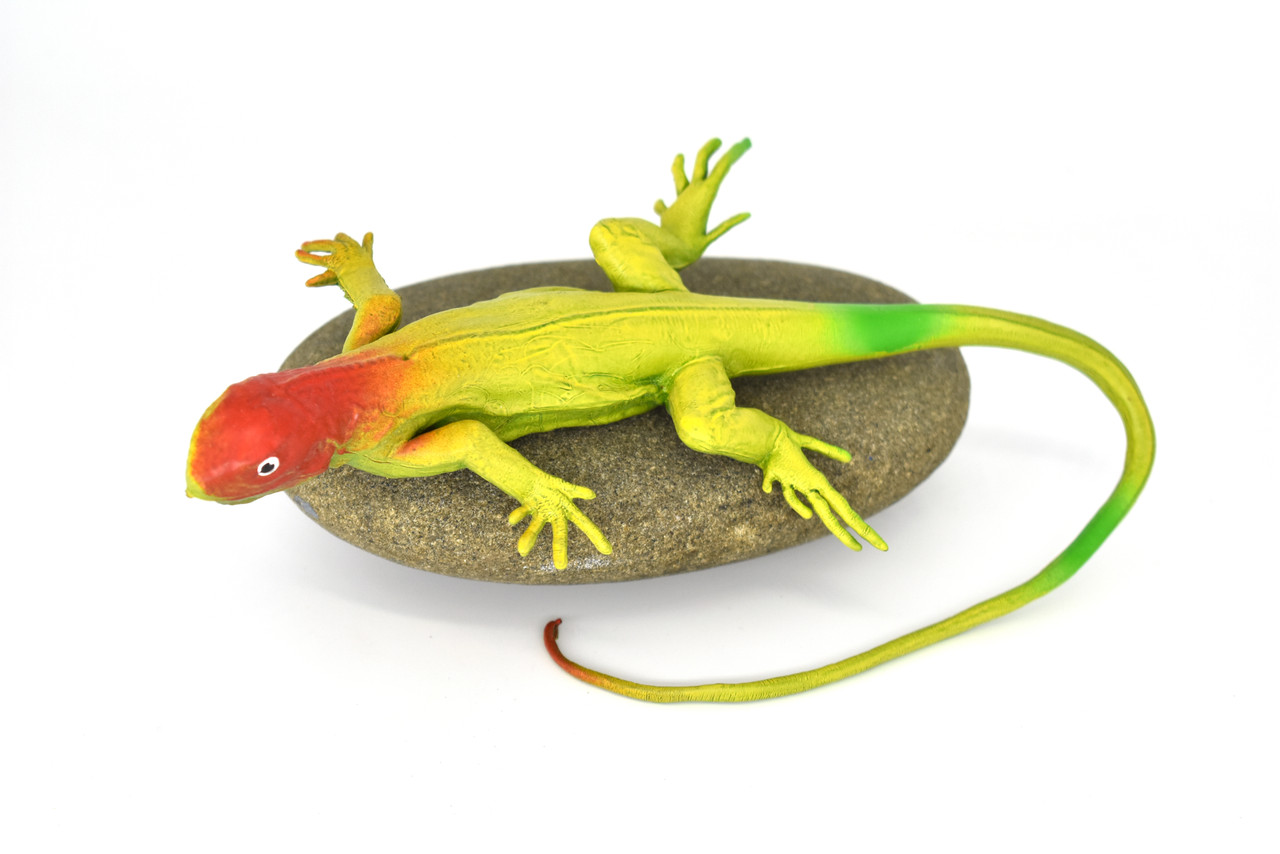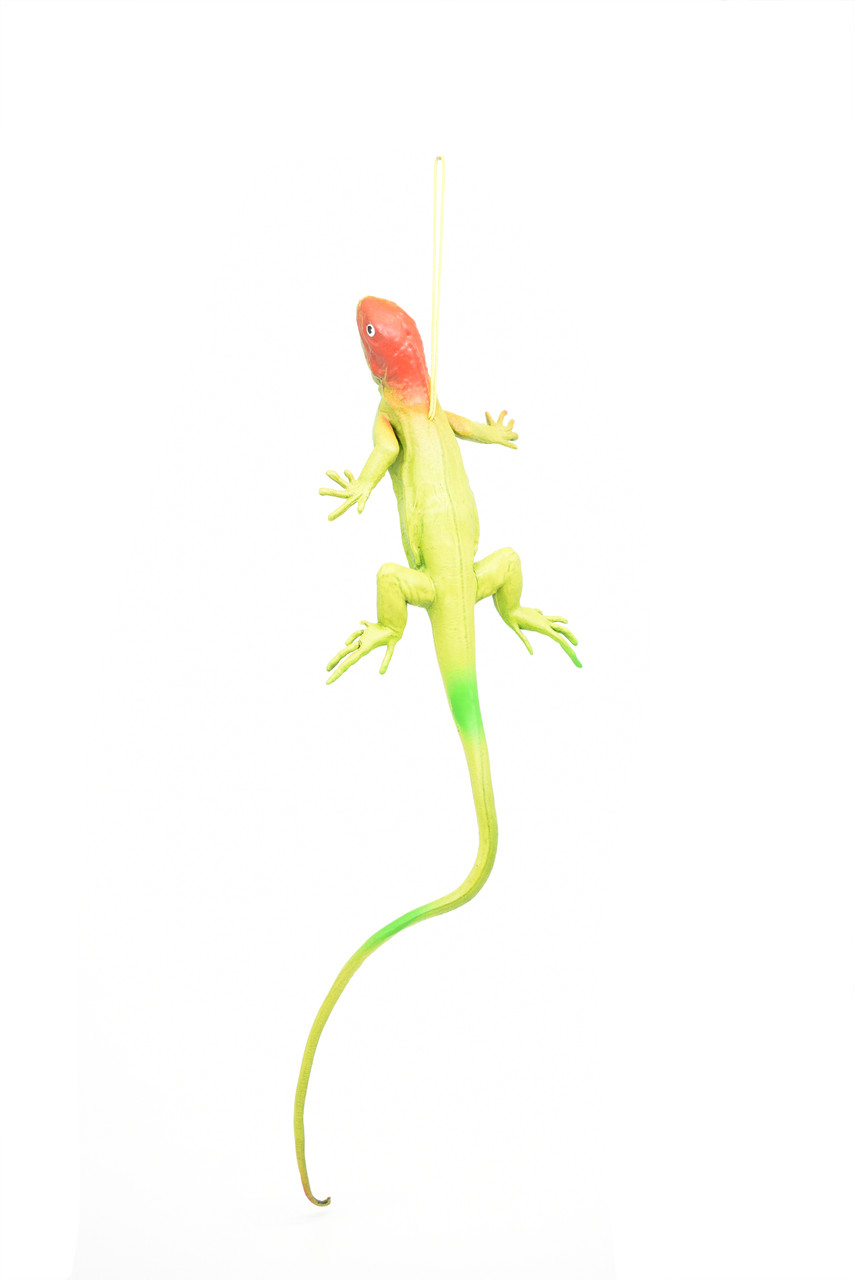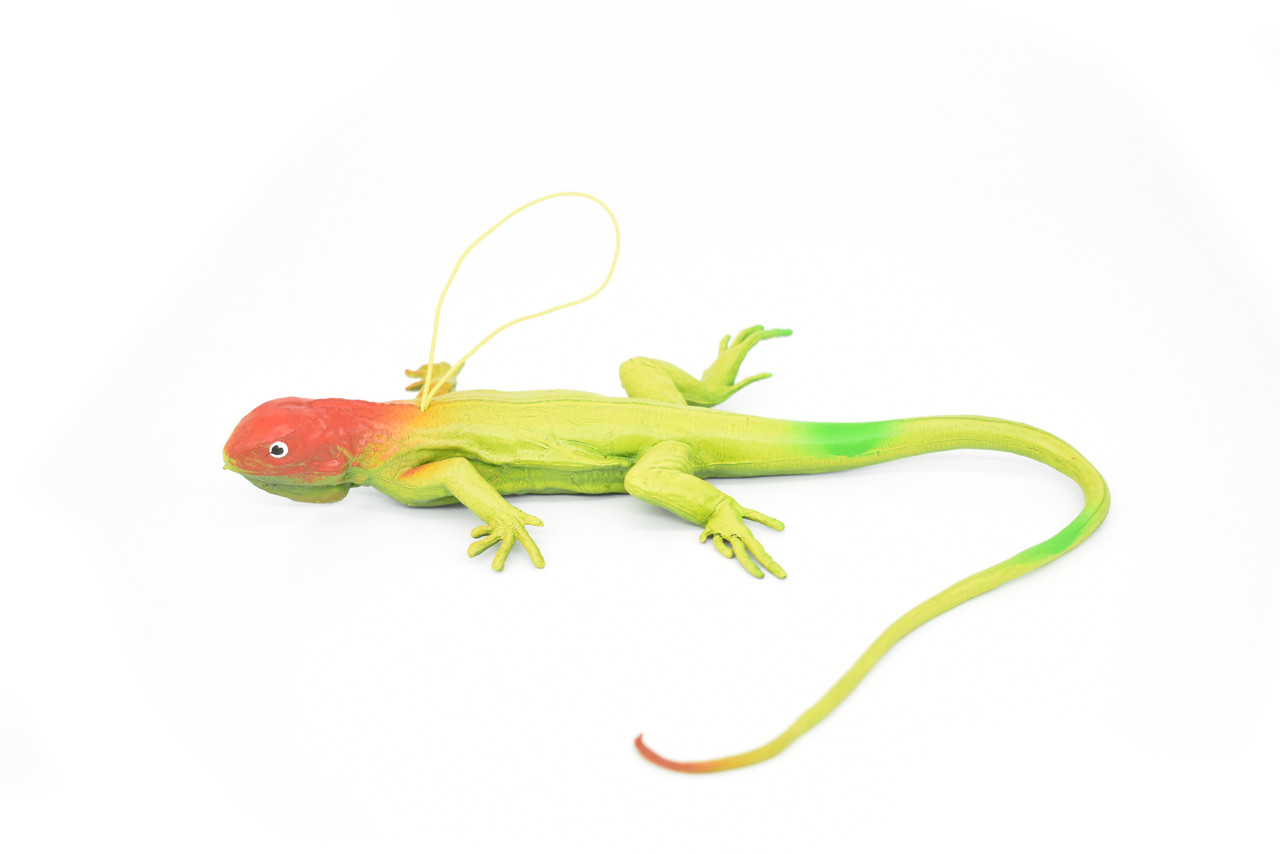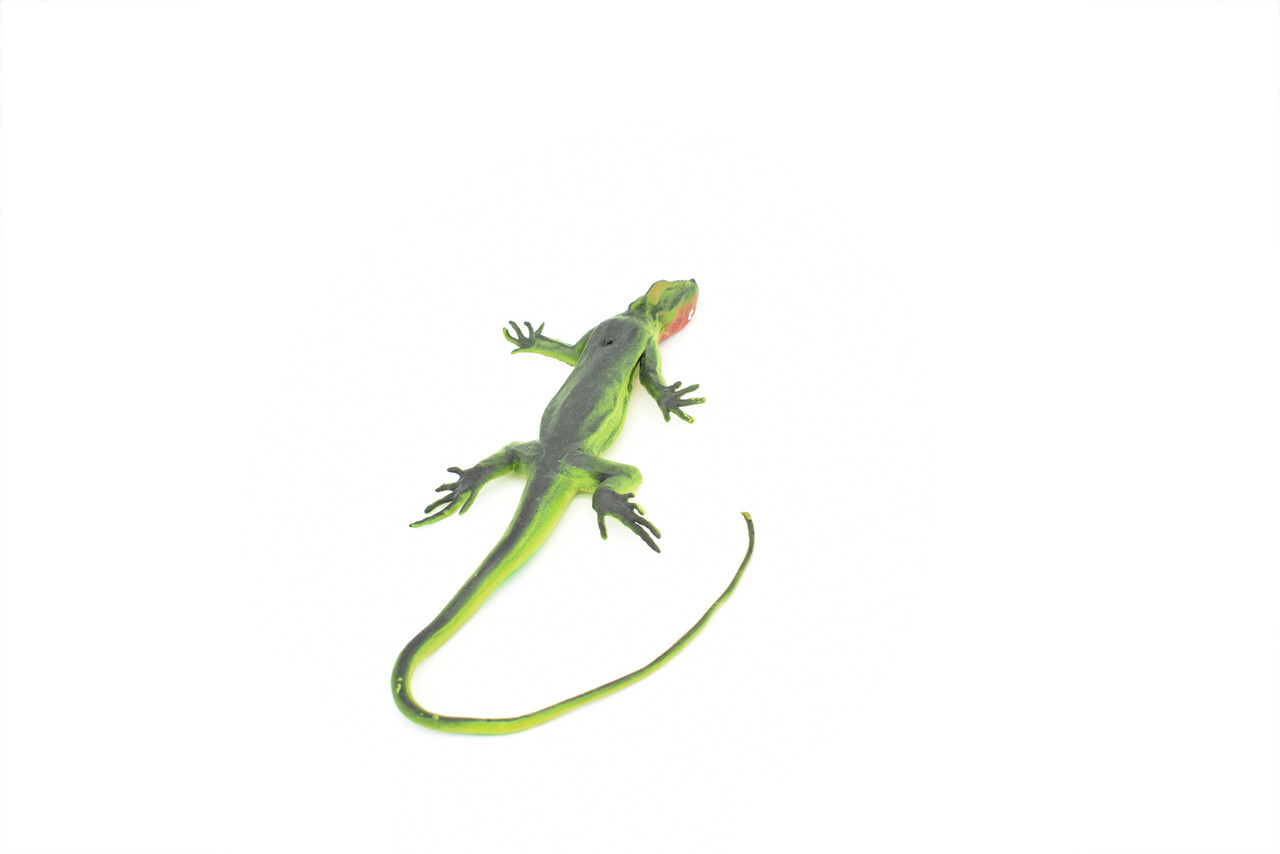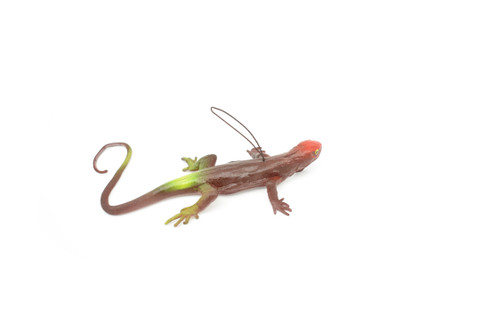Product Description
This awesome lizard is 10" Long! Made of Soft Stretchy Rubber. makes a great gift for anyone who loves reptiles.
Lizards are a widespread group of squamate reptiles, with over 7,000 species, ranging across all continents except Antarctica, as well as most oceanic island chains. The group is paraphyletic since it excludes the snakes and Amphisbaenia although some lizards are more closely related to these two excluded groups than they are to other lizards. Lizards range in size from chameleons and geckos a few centimeters long to the 3-meter-long Komodo dragon. Most lizards are quadrupedal, running with a strong side-to-side motion. Some lineages (known as "legless lizards"), have secondarily lost their legs, and have long snake-like bodies. Some lizards, such as the forest-dwelling Draco, are able to glide. They are often territorial, the males fighting off other males and signaling, often with bright colors, to attract mates and to intimidate rivals. Lizards are mainly carnivorous, often being sit-and-wait predators; many smaller species eat insects, while the Komodo eats mammals as big as water buffalo. Lizards make use of a variety of antipredator adaptations, including venom, camouflage, reflex bleeding, and the ability to sacrifice and regrow their tails.
The adult length of species within the suborder ranges from a few centimeters for chameleons such as Brookesia micra and geckos such as Sphaerodactylus ariasae to nearly 3 m (10 ft) in the case of the largest living varanid lizard, the Komodo dragon. Most lizards are fairly small animals.
Lizards typically have rounded torsos, elevated heads on short necks, four limbs and long tails, although some are legless. Lizards and snakes share a movable quadrate bone, distinguishing them from the rhynchocephalians, which have more rigid diapsid skulls. Some lizards such as chameleons have prehensile tails, assisting them in climbing among vegetation.
As in other reptiles, the skin of lizards is covered in overlapping scales made of keratin. This provides protection from the environment and reduces water loss through evaporation. This adaptation enables lizards to thrive in some of the driest deserts on earth. The skin is tough and leathery, and is shed (sloughed) as the animal grows. Unlike snakes which shed the skin in a single piece, lizards slough their skin in several pieces. The scales may be modified into spines for display or protection, and some species have bone osteoderms underneath the scales.
Thanks for visiting Collectible Wildlife Gifts, the leading provider of high-quality, lifelike animal toys and gifts! We work hard to ensure we have a diverse range of products. Each product is inspected for their quality craftsmanship. Whether you're searching for a great gift or seeking educational designs for displays, we’ve got you covered.
At Collectible Wildlife Gifts, our products appeal to a wide range of customers, including family, friends, and educators. Our products are trusted and used by professional organizations as well including aquariums, zoos, and movie studios.
Our extensive line of products boasts everything from plush sharks to educational animal growth cycles. Our products bring joy to recipients, and serve as valuable educational resources, sparking curiosity and fostering learning.
Discover the wonders of the natural world with Collectible Wildlife Gifts. Browse our collection today!

